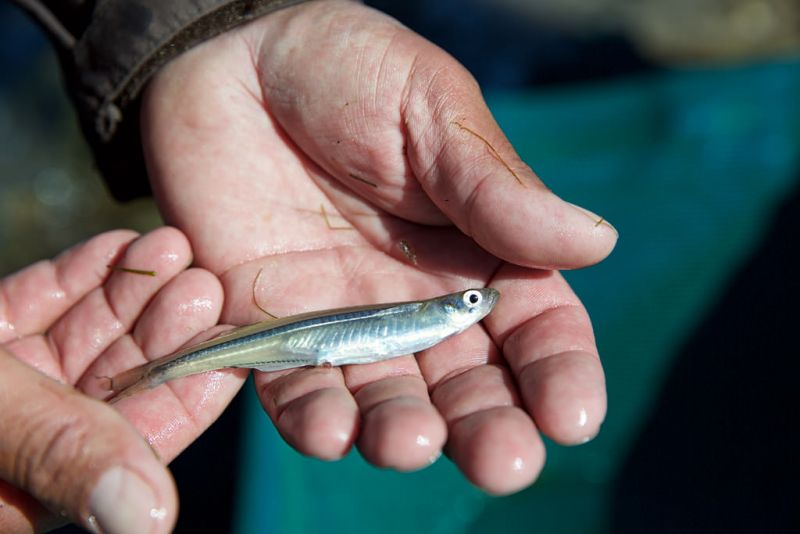Warmer Water, Chemical Exposure Intensifies Harmful Effects in a Coastal Fish
Published on by Water Network Research, Official research team of The Water Network in Academic
Warmer water temperatures, combined with exposure to chemicals already known to be harmful to aquatic life, could threaten organisms that have temperature-sensitive sex determination.
Researchers found that inland silversides (Menidia beryllina) exposed to endocrine disrupting compounds (EDCs) exhibited altered sex ratios, lower fertility rates and deformities. Further, the effects were more acute in the fish exposed at the warmer water temperatures predicted by the Intergovernmental Panel on Climate Change.

Source: Flick Public Domain
The study was published in the journal Scientific Reports.
“This may be a serious issue for this species and others,” said Susanne Brander, an aquatic toxicologist at Oregon State University who co-authored the study. “We saw fewer offspring in multiple generations at the warmer temperatures across the board. With altered sex ratio and altered reproduction, there is certainly potential for population-level effects.”
Inland silversides are small—adults are about 4 inches long—that are native to estuaries in eastern North America and the Gulf of Mexico and have been introduced into California. They primarily feed on zooplankton and are an important prey species for a variety of fish and birds.
The compounds studied by the researchers were the insecticide bifenthrin and ethinylestradiol (EE2), a synthetic estrogen found in almost all combined forms of birth control pills.
A large portion of EE2 is not absorbed by the body and is excreted in urine. Wastewater treatment plants generally aren’t equipped to eliminate such chemicals and they end up in rivers, and eventually estuaries. Bifenthrin is used to control insects in homes, orchards and nurseries.
In the study, three generations of silversides were exposed to a nanogram per liter of bifenthrin and EE2, in water at 22 degrees Celsius (71.6 degrees Fahrenheit) and 28 degrees Celsius (82.4 degrees Fahrenheit).
“The exposure levels were equivalent to a drop in an Olympic-sized swimming pool,” Brander said. “Our scenario was fish exposed in a runoff event, for example in spring when people have just applied pesticide to their homes and there is a lot of rain.”
Each generation was exposed to the chemicals for a 35-day period.
The change in temperature was important, Brander said, because silversides, as well as some other vertebrate species, have evolved to produce more females in colder water and more males in warmer water, giving the females a longer time to grow and produce more eggs. But in the study, more females were produced in both chemical exposures at warmer temperatures, giving the females less time to grow. Smaller females tend to produce fewer eggs, Brander said.
There were also significant levels of tailfin deformities, with the effects being worse at warmer temperatures. A malformed tailfin makes it difficult for the fish to avoid predators.
Brander and the study’s lead author, Bethany DeCourten, conducted the research at the University of North Carolina Wilmington, where DeCourten is a graduate student. Brander recently joined the faculty in OSU’s Department of Environmental and Molecular Toxicology in the College of Agricultural Sciences.
Brander was hired under OSU’s Marine Studies Initiative, a comprehensive effort to address ocean health and coastal challenges by creating a global education and research program that blends the science of oceanography with business, engineering, education, the arts and humanities, agriculture sciences, forestry and social sciences.
The study was funded by the California Department of Fish and Wildlife and the U.S. Environmental Protection Agency.
Source: Oregon State University
Media
Taxonomy
- Environment
- Pollution
- Coastal
- Climate Change
- Climate Change Adaptation
- Climate Change Resilience
- Pollution